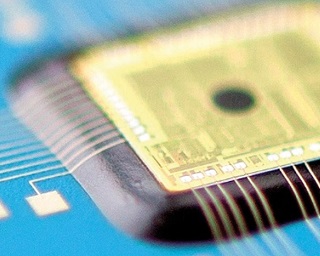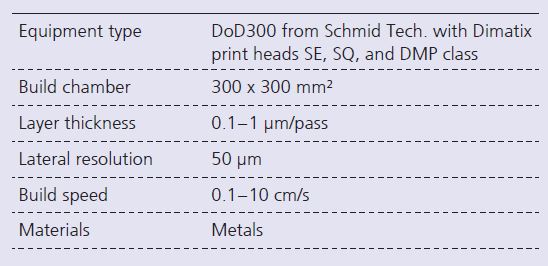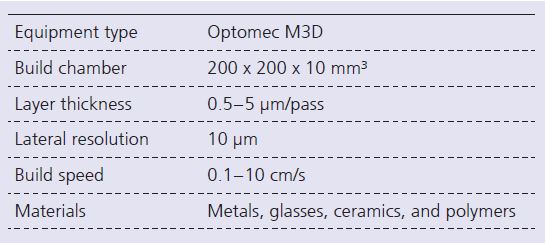
Functionalization

Digital printing methods that can be used for high-resolution application of functional structures to freeform surfaces represent the key technologies for functionalization of 3D components. These technologies are well-established for polymer materials, but they are still in the development stage for ceramic functional layers.
Especially promising for use within the framework of additive manufacturing of ceramic parts are adapted inkjet and aerosol jet printing methods, each of which exhibits special features. Whereas functional inks can be deposited over large areas by multiple print heads in a non-contact inkjet printing process, aerosol jet printing is suitable for application of finer structures to three-dimensional objects.
Current research at Fraunhofer IKTS is focused on adaptation of materials and technologies, integration into overall process and equipment concepts, and testing in prototypical applications with project and industry partners.
Inkjet and aerosol jet printing
The non-contact method of inkjet printing has long been the state of the art in graphic design applications and polymer-based functional structures. The drop-on-demand (DOD) method used at Fraunhofer IKTS works with high-viscosity inks, which are sprayed onto a planar substrate by means of a print head. Multiple nozzles are used for printing of components with large surface areas.
Fraunhofer IKTS has been developing highly specialized nanoparticle inks for functionalization of ceramic microsystems by inkjet printing for a number of years now. Current efforts are aimed at adaptation of these inks for use with other additive manufacturing methods. Special expertise can be demonstrated in adapted noble metal inks (Ag, Au, Pt, and Pd), metal inks (Cu, Ni, and Si), and carbon inks.
As a direct-writing method for three-dimensional deposition of functional layers (conductive traces, resistors, sensors, etc.) with an extremely high resolution, aerosol jet printing closes the gap between screen printing and lithography. Offering minimum structural widths of less than 10 μm, this method opens up a multitude of new application possibilities, especially in combination with AM components. The inks required for printing are atomized into a fine mist and then introduced into a gas stream. The aerosol is densified and conveyed to the print head. The resultant focused droplet stream has a diameter of less than 10 μm. Due to the high droplet waist length, printing is also possible on 3D substrate topographies.
Fraunhofer IKTS possesses unique know-how in the preparation and processing of optimized inks, especially for meeting the special requirements of ceramic parts with respect to co-sintering and shrinkage behavior. These inks are composed of organic components (binders, dispersants, and solvents) and solid particles (e.g., metals, glasses, or oxides).
Development is moving towards multi-component suspensions with properties, adhesion, and expansion behavior that, as in the established thick-film pastes, can be adjusted for different substrate materials through the use of special glassy phases, besides single-component inks based on precipitated particles. For ensuring good ink printing properties, the glassy phase grain size is brought down to < 1 μm through high-energy milling. The wetting properties and the rheology of the inks can be adjusted through suitable selection of the liquid phase and dispersants.
Services offered
- Preparation of submicron single- and multi-component printable functional inks
- Characterization of inks (stability and rheology)
- Printing of layer thicknesses between 3–20 μm on 3D objects of 20–50 μm width
- Application-specific solutions for conductive, resistive, heater, and insulator inks
- Adaptation of thermomechanical properties to specifications of various substrate materials
- Technology and component development
Screen printing and jet dispensing
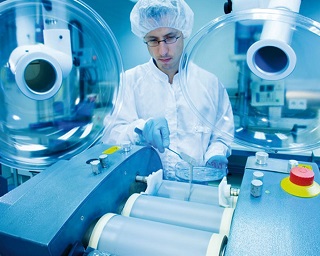
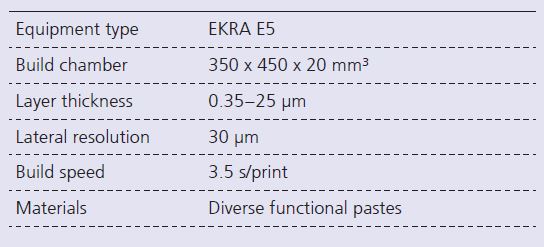
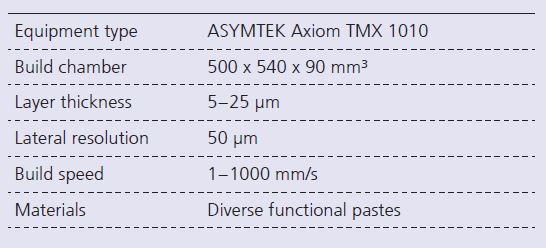
Besides digital printing technologies, classic screen printing and jet dispensing technologies can also be used for functionalization of AM parts. Deposition of functional layers by screen printing and stencil printing has long been used in hybrid electronics, production of electroceramic components, and energy technology. Screen printing offers high cost efficiency and performance capabilities. In the last few years, it has become possible to reduce the maximum structural resolution to less than 30 μm and to print layers with locally differing thicknesses via step-up/step-down stencils.
Fraunhofer IKTS is specialized in the development of functional pastes for a wide range of applications and printing technologies. The chemical compositions of the solids and rheological adaptation of the pastes to the desired layer morphology and given printing technology are important factors that are considered.
Fraunhofer IKTS also has digital (i.e., direct-writing) printing technologies, such as microdispensing and jet dispensing, available for paste application. These methods are primarily used for paste deposition on 3D surfaces or non-planar part topographies and hence are highly suitable for AM components.
Services offered
- Development and preparation of customer-specific functional pastes
- Technology and component development according to customer specifications
- Paste characterization (rheology, printing behavior, sintering/shrinkage behavior, layer morphology, and electrical/dielectric properties)
- Reliability analyses (moisture, heat, thermal cycling, power cycling, etc.)
Diode laser sintering
AM structures require special post-treatment for removal of organic components and/or sintering of metal/ceramic particles. Especially for functionalized surfaces with traces, resistors, or antennas, conventional additive processes are faced with the challenge of developing integrated process steps.
New post-processing approaches incorporating the advantages of 2D functionalization and adapting them to the new application area are needed for efficient processing of multi-material components. The efficiency of this processing contributes decisively to the cost-effectiveness of the overall manufacturing process.
Fraunhofer IKTS employs an innovative method based on a microoptically optimized high-power diode laser line (HPDL). With this technology, extremely fast functionalization of printed materials from metals with high melting points and conductive ceramics is made possible. Thanks to continuous diffusion of heat, processing with an HPDL is about 20 times more efficient than with conventional standard point laser systems. In addition, this method’s ultrafast heating/cooling (> 106 K/s) enables selective and precise energy transfer as well as processing in air.
Current research efforts are concentrated on investigating the interactions between HPDL parameters, ink and paste properties, and the required structure and functionality. The range of processable materials encompasses nickel and molybdenum on aluminum oxides as well as silver, gold, and copper, which are suitable for polymer, glass, and Al2O3 substrates. Recent sintering tests on printed molybdenum layers suggested heating of printed structures at temperatures of > 1600 °C.
Services offered
- Functionalization of printed metal and ceramic structures
- Realization of unique material properties by fast melting/ solidification, e.g., by spinodal decomposition
- Feasibility studies and demonstration on the laboratory scale
